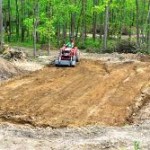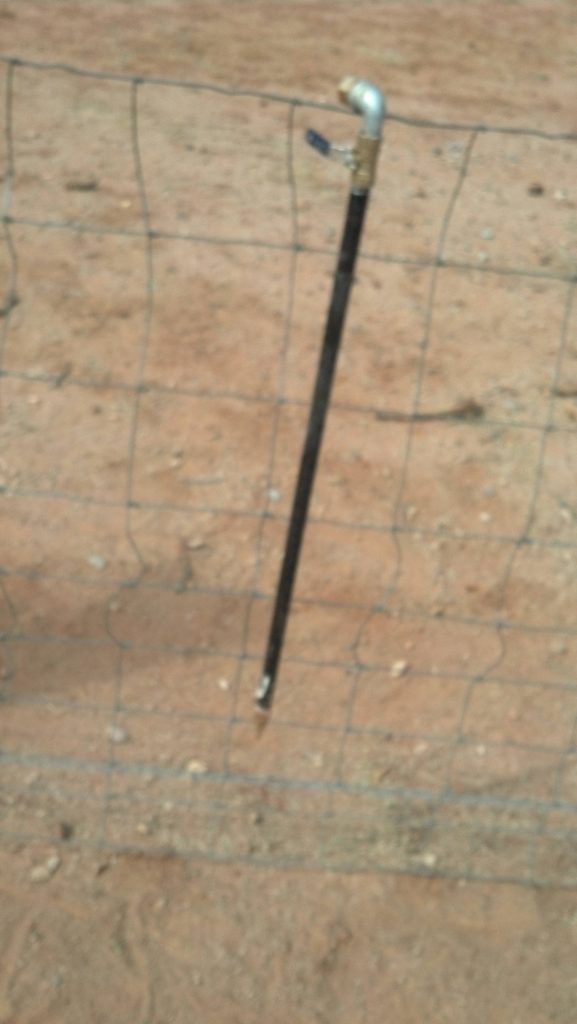How Long Will It Take to Erect My Post Frame Building?
This is a popular question posed not only by many potential building owners who are considering doing work themselves, but also by contractors who are considering erecting a building for others.
 Before any question of construction time can be addressed, let’s eliminate one crucial variable –dirt. Time to lay out a building and dig holes depends upon so many factors. Is the building site level? If it is level, is your building’s prepared pad, actually large enough to place batter boards on? Sites “too tight” to work on will slow everything down.
Before any question of construction time can be addressed, let’s eliminate one crucial variable –dirt. Time to lay out a building and dig holes depends upon so many factors. Is the building site level? If it is level, is your building’s prepared pad, actually large enough to place batter boards on? Sites “too tight” to work on will slow everything down.
October 30, 1996 when my company set a world speed record constructing a fully featured two car garage on site, we had a daunting task of it being under five feet from fences along one side and an end. And we still completed it in 31-1/2 minutes! Yes, minutes!
What is the site’s soil like? Soils with medium soil bearing pressures (1500-2000 pounds per square foot), generally are pretty good to dig in. Extremely sandy? Conical shaped holes will be created and they are hard to clean out. Lots of clay? When wet it sticks to everything, when dry it can be as hard as concrete. Head sized rocks? An auger will only pull up rocks up to one-half bit diameter. Limestone, granite, or caliche? If it sounds hard, it probably will be.
Available equipment type for digging holes plays a huge part in digging time as well. By hand with a shovel and clam shells is going to be much slower than a line truck with an auger.
So….putting dirt in our rear view mirror, we move forward (and upward)!
When I was running my own construction crews, we used to monitor carefully approximate amount of construction time it would take crews to erect our buildings. There were always some exceptional crews, ones who we would shake our heads at wondering how they built things so fast. One particular four man crew, would start on a 60’ x 120’ x 16’ riding arena Monday morning, and be in our office at noon on Friday with building done and collecting their payment. Their secret? They had worked together for so many years they did not even have to talk to each other on a jobsite. Each knew instinctively what to do next and what their fellow crew members were doing.
When I put up my first prefabricated roof truss assembly building, I contracted with them for roof steel installation. On this 60’ x 84’ building, I was almost disappointed when they completed it in under four hours!
Getting back to more average performances…. measuring person hours (yes, I had an all-female crew) to building value ended up being a fairly constant measure. Keeping in mind, this is all my crews did, so they had lots of experience They would assemble $120 of materials per person hour. Other than those few exceptional crews, this was a solid number to work from with a variability of about 10%.
For an average building owner doing their own work, I’d look at it taking twice as many hours, provided their “homework” of reading assembly instructions and reviewing plans for their next day’s work was done off actual construction time.
Can you construct a post frame building kit package yourself? Most probably, and as long as you are physically capable, will read and follow instructions, it will be a beautiful building. Should you build it yourself? Assuming a $24,000 building kit, plan on around 400 person-hours. Hired out, it is probably reasonable to spend roughly $12,000 for labor. Obviously this dollar amount will vary greatly from locale to locale. Factors such as distance to travel to a jobsite and costs for insurance weigh heavily into this equation. If a labor quote is $12,000 and you can build it in 400 hours, you have “paid” yourself $30 per hour.
Besides cost savings, there is a satisfaction of having created your own beautiful building and chances are –the outcome will be better than having hired it to be done!







